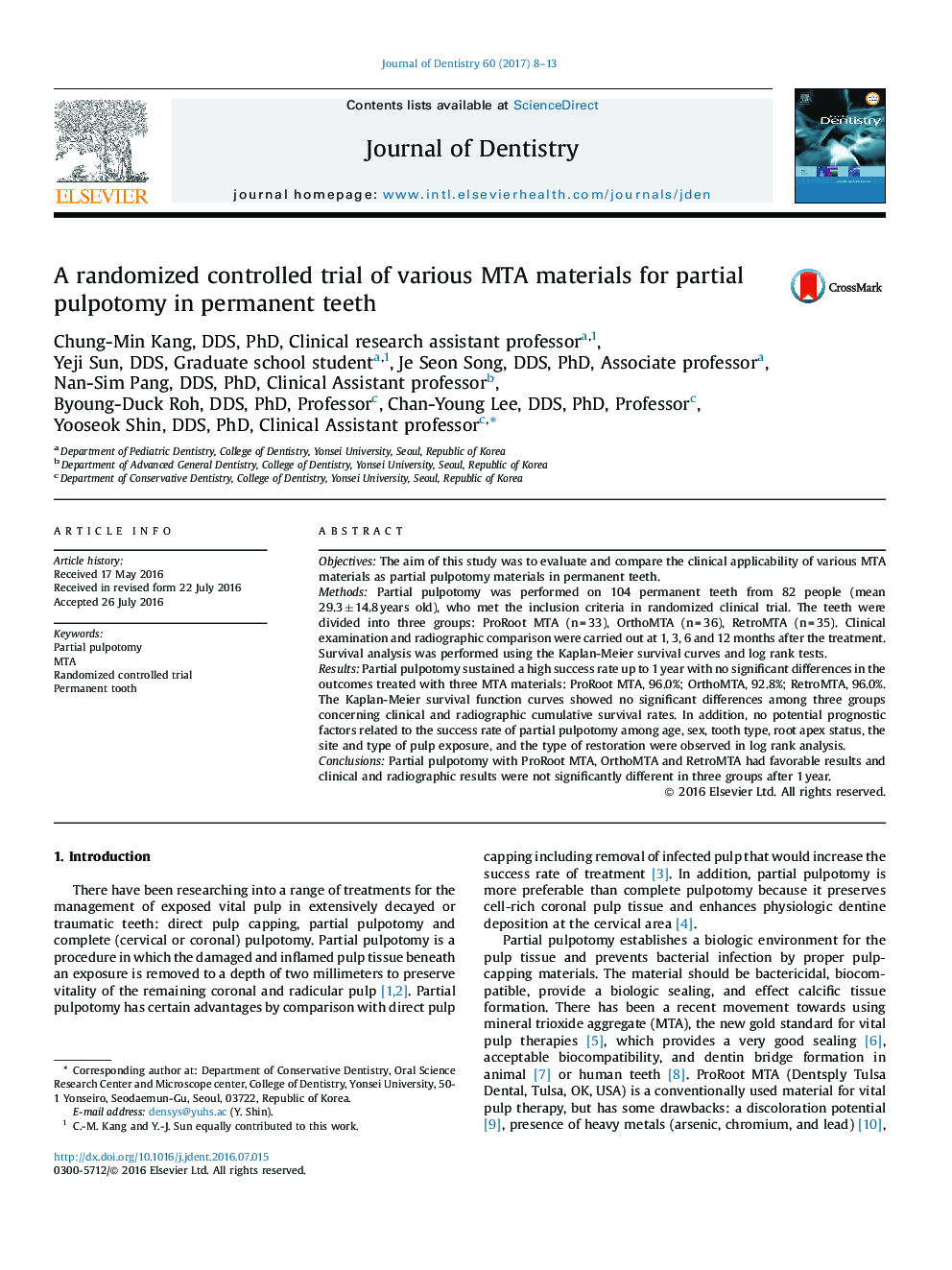| Article ID | Journal | Published Year | Pages | File Type |
|---|---|---|---|---|
| 5640543 | Journal of Dentistry | 2017 | 6 Pages |
ObjectivesThe aim of this study was to evaluate and compare the clinical applicability of various MTA materials as partial pulpotomy materials in permanent teeth.MethodsPartial pulpotomy was performed on 104 permanent teeth from 82 people (mean 29.3 ± 14.8 years old), who met the inclusion criteria in randomized clinical trial. The teeth were divided into three groups: ProRoot MTA (n = 33), OrthoMTA (n = 36), RetroMTA (n = 35). Clinical examination and radiographic comparison were carried out at 1, 3, 6 and 12 months after the treatment. Survival analysis was performed using the Kaplan-Meier survival curves and log rank tests.ResultsPartial pulpotomy sustained a high success rate up to 1 year with no significant differences in the outcomes treated with three MTA materials: ProRoot MTA, 96.0%; OrthoMTA, 92.8%; RetroMTA, 96.0%. The Kaplan-Meier survival function curves showed no significant differences among three groups concerning clinical and radiographic cumulative survival rates. In addition, no potential prognostic factors related to the success rate of partial pulpotomy among age, sex, tooth type, root apex status, the site and type of pulp exposure, and the type of restoration were observed in log rank analysis.ConclusionsPartial pulpotomy with ProRoot MTA, OrthoMTA and RetroMTA had favorable results and clinical and radiographic results were not significantly different in three groups after 1 year.
Graphical abstractDownload high-res image (143KB)Download full-size image
